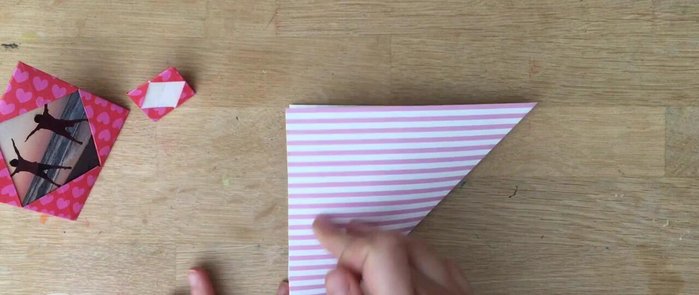Valentine's Day is just around the corner, and what better way to show your love than with a heartfelt, handmade gift? This year, skip the expensive store-bought frames and create charming, personalized photo frames entirely from paper – no glue required! This simple yet elegant DIY project is perfect for all skill levels, requiring only basic materials readily available at home. Forget messy glue sticks and complicated techniques; this method utilizes clever folding and scoring to create surprisingly sturdy and attractive frames in minutes. You'll be amazed at how easily you can transform ordinary paper into a beautiful keepsake.
These no-glue paper photo frames make an ideal craft for couples, families, or even individual crafting enthusiasts. Whether you're aiming for a rustic, minimalist look, or something more vibrant and playful, the design possibilities are endless. They offer a wonderful opportunity to showcase cherished memories and add a personal touch to your Valentine's Day celebrations. Let's dive into the step-by-step instructions to create your own stunning, adhesive-free photo frames!
Preparation and Safety Guidelines
- Paper (patterned or plain)
- Photo
- Scissors (optional)
- Glue (optional)
- Stickers or decorations (optional)
- Adult supervision is recommended, especially for younger children handling scissors and potentially sharp paper edges.
- Use child-safe scissors to minimize the risk of cuts or injuries.
- Ensure the surface you're working on is clean and clear of any obstacles to prevent accidents.
Step-by-Step Instructions
Prepare the Paper
- Prepare your square paper. If using A4 paper, cut it in half and then into a square.

Prepare the Paper First Diagonal Fold
- Fold the square in half diagonally, then unfold.

First Diagonal Fold First Set of Corner Folds
- Bring each corner to the center point of the square, creating a smaller square.

First Set of Corner Folds Flip the Paper
- Turn the paper over so the other side is facing up.

Flip the Paper Second Set of Corner Folds
- Fold all four corners to the center again.

Second Set of Corner Folds Fold Up Flaps
- Fold one flap upwards, then the opposite flap upwards.

Fold Up Flaps Tuck and Secure
- Tuck the folded flaps under the created creases to secure the frame.

Tuck and Secure Insert Photo
- Gently slide your photo into the frame.

Insert Photo
Read more: Easy Origami Paper Box Tutorial: Step-by-Step Guide
Tips
- Use patterned paper for a decorative look, or decorate plain paper afterward.
- Adjust the paper size to fit your photo. Smaller squares make mini frames.
- These frames stand up on their own for easy display.
- Attach the frames to cards with blue tack for a unique card design.







